Coming Together for the Boquet
Protecting, Restoring and Rewilding a River for All Who Rely on It
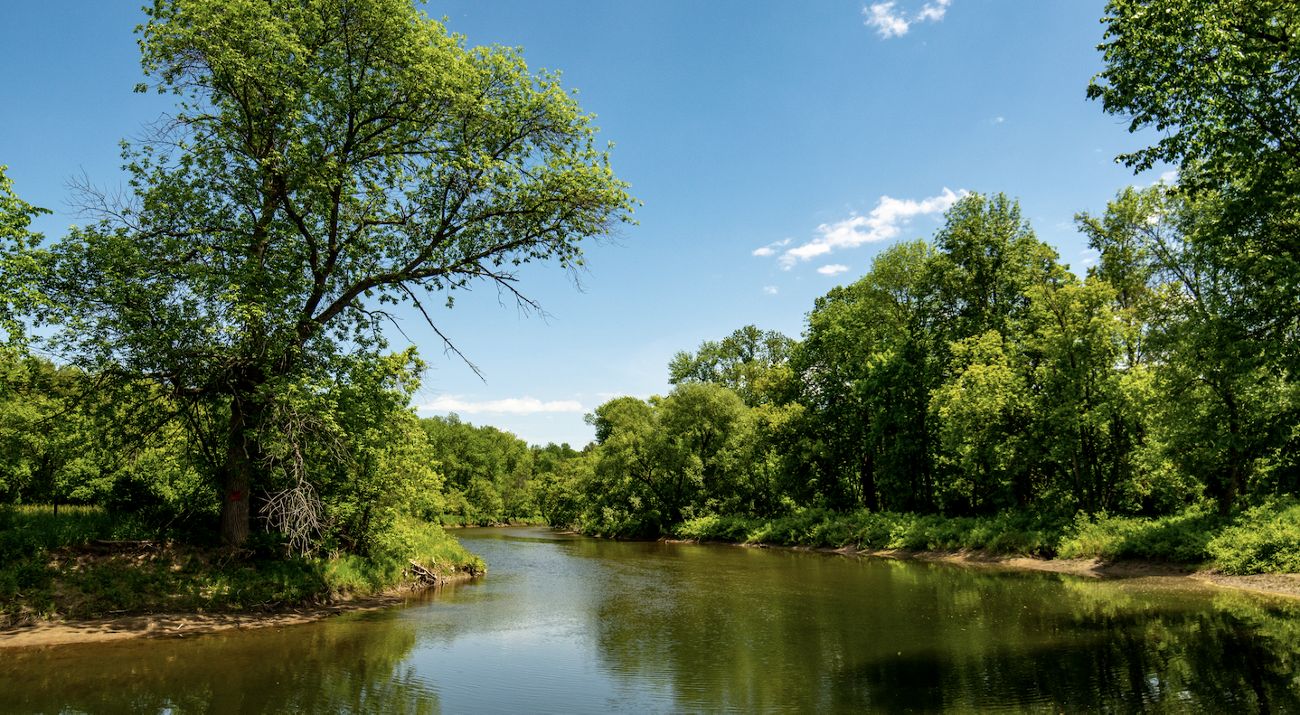
As soon as the ice is out, Dirk Bryant can be found knee-deep in the Boquet River, casting a fly rod with a colorful streamer fly. To master fly fishing, you must learn to read the water. And like many of us, Bryant has been alarmed by the changes he’s seen over the years.
“The careful observation necessary for fly fishing is in some ways similar to how we practice climate science, because we’re examining how our natural systems change over time,” says Bryant, director of lands for The Nature Conservancy in New York.
“The warming trend has been disheartening to say the least.”
These changes don’t just impact fish; they have a big influence on our communities, too. Human-caused climate change can wreak havoc on ecosystems services—the important benefits that rivers provide—and can increase the number and severity of destructive floods. And it’s not just climate change that is negatively impacting the mighty Boquet River. Obsolete infrastructure like dams and poorly designed culverts, which in some cases were built hundreds of years ago, are blocking the natural movement of water, preventing fish from accessing spawning habitat and creating safety risks for Adirondack communities.
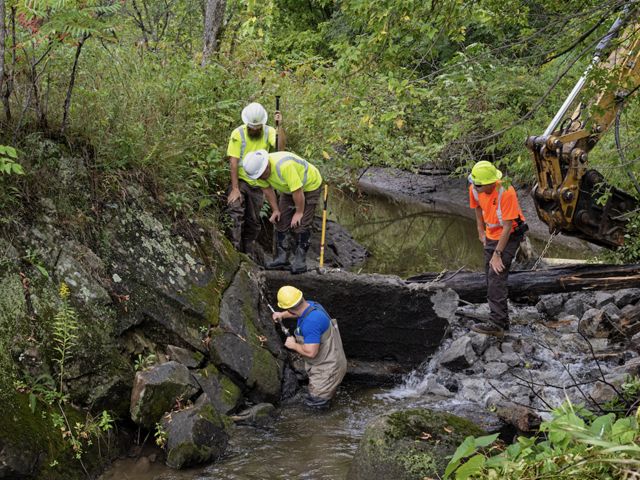
Let the River Run
New York’s 47-mile Boquet River is a major tributary to Lake Champlain, which provides world-class recreational fishing and supports verdant land for farming. It's also the state's steepest river, with a vertical drop of over 2,700 feet from its source on Dix Mountain to where it empties into Lake Champlain in Willsboro.
In the early 19th century, the Willsboro Dam cut off Lake Champlain from the spawning grounds farther upstream in the Boquet River. By the 1840s, the once-abundant Atlantic salmon—that people claimed could be speared with pitchforks and scared horses from crossing the river—were gone. At the same time, increased land use degraded the habitat.
Quote
Several years ago, The Nature Conservancy funded a study to remove this large dam and, based on its findings, the town demolished it. Just two years later, for the first time in 150 years, wild baby salmon—or fry as they’re known—were found in the Boquet River.
Removing the dam was a vital first step in restoring healthy habitat, but it was not a panacea. Since the dam’s removal there have been years where no salmon fry were found at all.
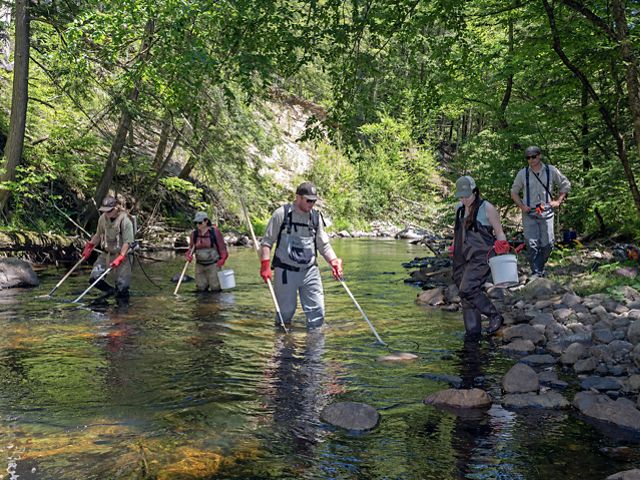
A Collaborative Approach
To restore this important body of water, a holistic and collaborative approach is needed. In concert with many partners, The Nature Conservancy completed the three-year Boquet River Watershed Protection and Restoration Project to enhance the health and climate readiness of the river, with a focus on cold-water species like salmon that are particularly vulnerable to climate change. Funding for this project was awarded by the Great Lakes Fishery Commission to New England Interstate Water Pollution Control Commission, in partnership with the Lake Champlain Basin Program.
With partners, The Nature Conservancy team developed a road-stream crossing prioritization tool that produced a suggested ‘top 10 list’ of obsolete dams and culverts in need of removal or replacement in each municipality in the Lake Champlain basin. Such barriers cut off fish from sizable portions of their habitat, like the Willsboro dam once did, and often cause flooding. These prioritization lists are an invaluable tool to help towns and villages access new public funding for these projects via the federal Infrastructure Investment and Jobs Act and Inflation Reduction Act, and New York’s Clean Water, Clean Air and Green Jobs Environmental Bond Act.
“The funding coming down the pike is a once-in-a-generation opportunity to transform our communities and ecosystems by building resilient infrastructure,” says Josh LaFountain, freshwater specialist for The Nature Conservancy in New York. “We’re reworking our approach to best take advantage of this historic opportunity.”
Based on our collective research, The Nature Conservancy and the U.S. Fish and Wildlife Service entered into a cooperative agreement to immediately address six barriers in the Boquet River Basin, reconnecting more than 22 miles of high-quality salmon and trout habitat in the watershed.
The Small Dam with Big Impact
One river restoration project with immediate results is the removal of the Cold Brook Dam in the Hamlet of Reber. Rising several feet above the stream, the dam created an insurmountable barrier for fish, preventing them from reaching valuable cold water and spawning habitat.
“The Cold Brook Dam was located near the confluence of Cold Brook and the North Branch of the Boquet River, which has been identified as a potentially suitable spawning habitat for natural landlocked Atlantic salmon. The stream is also resistant to increasing temperatures from climate change, making it a stronghold for Eastern brook trout populations,” says LaFountain. “Our goal is to open the entire system for trout and salmon spawning habitat, while also increasing flood resilience.”
The Nature Conservancy raised $1.2 million in private and public support to remove the Cold Brook Dam and implement culvert upgrades, immediately reconnecting an estimated six miles of habitat for cold-water fish to access the North Branch of the Boquet River.
This project brings big community benefits as well. The dam’s removal reduces flood risk for the area. In addition, three dry hydrants were installed, increasing year-round access to the river water for the Reber Volunteer Fire Department and improving public safety.
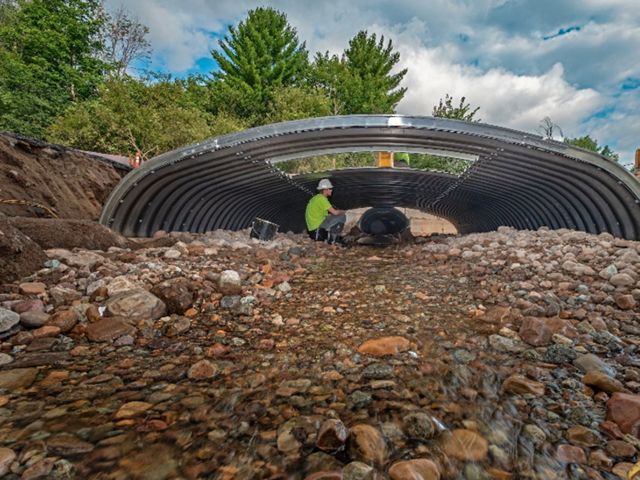
Setting the Stage for Long-term Success
Now, The Nature Conservancy and partners are working to increase the pace and scale of culvert upgrades and barrier removals that are completed yearly to ensure cold-water fish like landlocked Atlantic salmon and Eastern brook trout can reach spawning habitat and to better prepare Adirondack communities from increased flooding due to climate change.
The Conservancy has also helped our partners increase their capacity to restore the river. We will be supporting the Boquet River Association on administrative and technical work so that they can more easily manage watershed and water quality projects as they shift from an all-volunteer organization to one with paid staff, which would help expand restoration and community engagement in the Boquet watershed.

Protecting Critical Lands
Conserving priority lands in the Boquet watershed is also part of this comprehensive program to restore the river and protect freshwater habitat for fish and other species. The team performed an in-depth analysis of over 500 unprotected properties in the watershed over 10 acres in size that helped determine the most important land to protect along the river. This led to the protection of nearly 300 acres with more than two miles of forested habitat along the Boquet River by our partners at the Adirondack Land Trust in land deals funded by The Nature Conservancy.
Here, healthy and connected habitats help protect water quality and fish and other wildlife, and conservation easements protect the viability of a family farm, which provides local food and supports the surrounding rural economy.
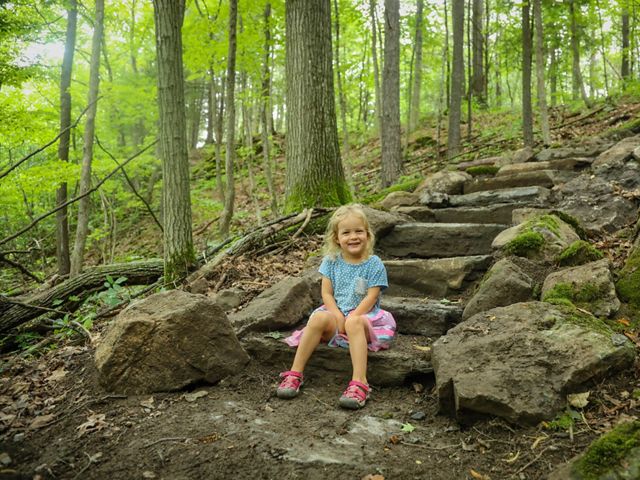
Bringing People to the Boquet
Just as important to restoring habitat is reconnecting people to nature. The Nature Conservancy’s Boquet River Nature Preserve in downtown Willsboro is just a few steps from where the Willsboro Dam once stood.
Thanks to extensive trail improvements made possible by our supporters, access to the Boquet River Nature Preserve is better than ever. Tim’s Trail, named in honor of Tim Barnett, who founded The Nature Conservancy’s Adirondacks chapter, is a 1.15-mile Universal Access loop that has a crushed stone surface that can accommodate walkers, runners, strollers and wheelchairs. The preserve includes 120 stunning acres of forest and floodplain, and more than a half-mile of shoreline on the lower Boquet River.
“Our work in the Boquet River and its surrounding lands began more than four decades ago. Now, we’re tackling threats from climate change, restoring crucial freshwater habitat and providing places for people to enjoy,” says Bryant. As a conservation leader and as a fisherman, he hopes that people will continue to come together to protect and restore the Boquet for all who rely on the river.
Written By:
Kara Jackson and Amanda Ely




